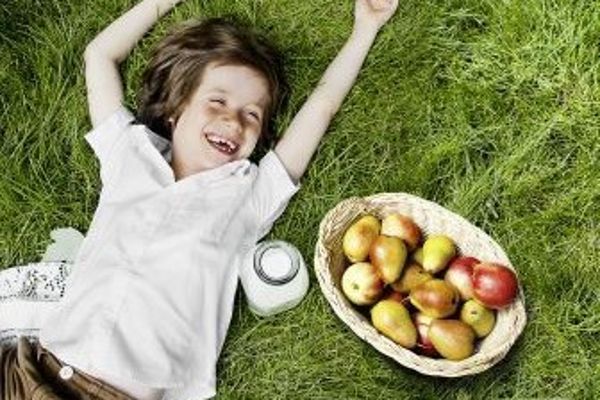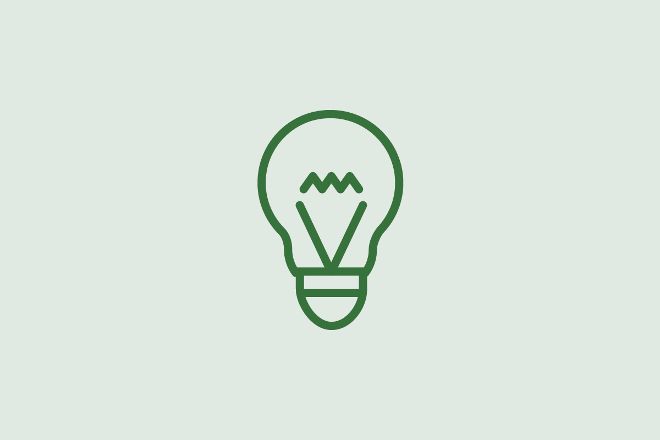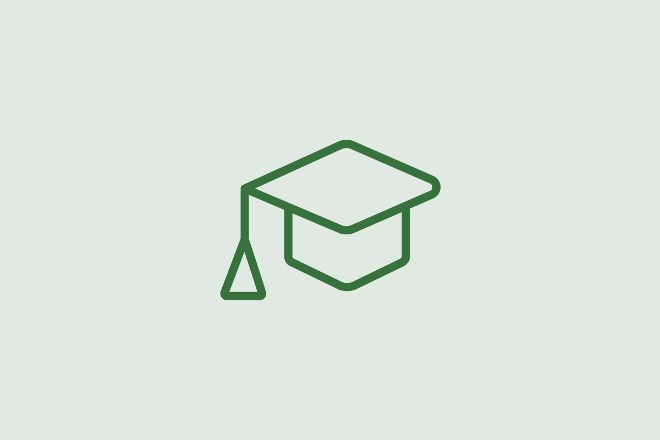The EU School Fruit, Vegetables, and Milk Scheme

The EU School Fruit, Vegetables, and Milk Scheme aims at promoting awareness for a healthy diet among children and adolescents in educational institutions. All Austrian schools and kindergartens can participate in the EU School Scheme and - as long as funds are not yet fully exploited - receive a subsidy.
The objective of this Scheme, created by the EU, is to promote healthy eating habits among children and future generations. This is done by teaching schoolchildren healthy food habits when they are of an age that is crucial for the development of their sense of taste and by helping them to understand how diet, origin and the production of food, agriculture and the environment are interconnected.
To this end, the European Union is using funds from the agricultural budget to finance Community assistance for the sale of fruit, vegetables and milk to children at schools at a reduced price.
For each school year all participating Member States receive two final budget allocations from the Commission for each of the two sectors, milk on the one hand, and fruit and vegetables on the other hand, respectively.
You will find information on programme participation and the administrative procedure for subsidies on the AMA website.
The EU School Fruit and Vegetables Scheme
The purchase of fresh fruit and vegetables for school and kindergarten children participating in the scheme is subsidised by EU funds at a rate of 50 percent of the product costs. The subsidy is capped at EUR 6.50 per kilo, which means that the maximum subsidy payable amounts to EUR 3.25 per kilo. For organic products, the subsidy increases to 70 percent of the net costs. The remaining costs, including value added tax, which is excluded from subsidisation, must be paid for by other supporting organisations like parents' associations and municipalities or by using private funds.
To ensure that even more regional and seasonal fruit and vegetables are distributed among children and adolescents, only specific fruit and vegetable varieties are eligible for subsidies. These include apples, pears, grapes, melons, walnuts, kiwis, apricots, cherries, peaches, nectarines, prunes, plums, strawberries, raspberries, blackberries, gooseberries, blueberries, black, white and red currant, orange carrots, yellow carrots, tomatoes, bell peppers, small radishes, white radishes, cucumbers, kohlrabi, celery and pea pods and then bananas, oranges, tangerines, clementines, satsumas and grapefruits only in the supply period from November to February.
School milk
Subsidies are available for a diverse range of products consisting of milk, soured milk and buttermilk, natural yogurt, but also for cocoa, fruit yogurt and fruit milk. The focus is on healthy nutrition, because the addition of salt, fat, sweeteners or artificial flavour enhancers is prohibited. Only a limited amount of sugar may be added. The subsidy for school milk varies depending on the proportion of milk contained in a given product. Thanks to subsidisation, the products become cheaper.
For products of category 0 (drinking milk, yoghurt, buttermilk, soured milk without any added substances) the subsidies amount to 50 percent of the net costs for conventionally produced products and 70 percent of the net costs for organic products.
School milk products are a rewarding snack to enjoy during breaks and often the first meal for children who come to school without first having had breakfast.
Virtually all school milk suppliers are regional direct marketers. The products are freshly made and, depending on the region and supplier, delivered in either glass bottles, cups or carton packaging. Where possible, the empty containers are taken back by the suppliers.
Milk campaign
At the beginning of the school year, a milk campaign is launched that subsidises – with the exception of value added tax – the supply of drinking milk with funds from the EU. Primary school children across Austria are the beneficiaries of this campaign and receive milk on a maximum of 5 consecutive school days in the period from September to October. The school milk farmers and a number of dairy farms have agreed to pay the VAT, as a result of which the drinking milk available to the school children is free of charge.
Drinking milk takes priority
In line with the scheme’s objective of promoting healthy eating habits among children, products without any added flavourings und added sweeteners like sugar or honey can be supplied to schoolchildren at a considerably lower price thanks to higher subsidies. As a result, drinking milk available outside the milk campaign for children in the participating educational institutions is much cheaper than cocoa, for example.
Accompanying measures
The purpose of the accompanying activities is to provide educational support when supplying fruit and vegetables, milk and dairy products. They are intended to teach children about healthy eating habits, about food production, agriculture and the environment and also about product diversity, regionality and seasonality.
The activities available include tastings and excursions to agricultural holdings. In the course of the tastings, additional agricultural produce and manufactured goods, including cheese, curd, honey, plant-based drinks from oats or soy, and processed fruit and vegetables, can be distributed among the children.
A lump sum from EU funds is granted for each participant. Check out the AMA website for further information on project submissions and the administrative procedure for subsidies.
The EU also subsidises the production of teaching material. The digital milk case was developed by Agrarmarkt Austria Marketing. It contains excellent teaching material on milk production for all school grades as well as worksheets, films, poster templates and a manual for teachers. The digital milk case can be ordered free of charge from Agrarmarkt Austria Marketing GmbH.
The Austrian Agency for Health and Food Safety (AGES) has developed further teaching material for the schools participating in the EU School Scheme, consisting of instructions on ten different experiments.
The experiments can be carried out with readily available utensils and/or foodstuffs within the framework of lessons.
By means of carrying out experiments children between 6 and 10 years shall develop a closer connection to and knowledge about fruits, vegetables and dairy products, but also get to know related bases of natural science. Moreover, videos on the experiments were shot, which can either be watched before carrying out the experiments as an assistance or afterwards as success check.
For children from 6 to 10 years AGES has prepared a quiz on the topics fruit, vegetables, milk and dairy products. The quiz exists as online version. If all 20 questions are answered correctly, the participant will receive a certificate as fruit and vegetables professional or milk professional.
In the the field of fruits and vegetables the acquisition of raised garden beds as well as of fruit trees and bushes in schools can be subsidized as accompanying educational measure.
Implementation in Austria
Since its original roll-out, the fruit and vegetable part of the programme has made lots of headway and established itself in Austria.
Product supplies amounted to 199 tonnes in 2010/11 and only four years later they had increased to a total of 831 tonnes.
In the 2022/23 school year, 1,088 tonnes of fruit and vegetables were distributed among approx. 289,000 children in 3,569 schools and kindergartens and approximately EUR 1.9 million of EU subsidies were paid for product deliveries.
Apples are by far the most frequently delivered product. Vegetables make up a 20 percent share in the products consumed. Roughly one third of the distributed products originate from organic production.
In the 2022/23 school year, 1,423 tonnes of school milk products were delivered to a total of 2,365 schools and kindergartens with a total of around 259,000 children. About EUR 0.65 million of EU subsidies were paid out, of which EUR 460,000 were spent on product supplies. The most popular product is cocoa. Organic products make up around 26 percent.
After the sharp decline caused by the pandemic, there has been an increase in the participation of schools and kindergartens in the program.
More Information
- Agrarmarkt Austria Agrarmarkt Austria
- New brochure “Milk Education”. Chamber of Agriculture of Lower Austria New brochure “Milk Education”. Chamber of Agriculture of Lower Austria
-

Quiz around the topics of fruit, vegetables and milk for children at the ages between 6 and 10 years
The questions are structured into different categories and comprise a total of 20 questions on the topic of fruit & vegetables and 20 questions on the topic of dairy products. If all 20 questions are answered correctly the participant will receive a certificate as fruit and vegetables professional -

Video instruction on ten different experiments around the topics of fruit, vegetables and milk for children at the ages between 6 and 10 years
Teaching material for the schools participating in the EU Schools Programme in the form of instructions on 10 different experiments.
The experiments can be carries out with readily available utensils and/or foodstuffs within the framework of lessons. -

Knowledge check
On the basis of experiments around fruit, vegetables and milk quiz questions were worked out, which can be used as knowledge checks.